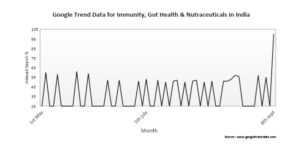Recently, two large mergers have been observed by Indian online pharmacy, which has not seen any substantial action for long due to the absence of proper regulations.
A majority stake in Chennai-based e-pharmacy Netmeds was picked up by Reliance Retail, while PharmEasy is integrating with Medlife. Drug distribution services on its website were also revealed by e-commerce firm Amazon. So the question is: has the Coronavirus pandemic outbreak affected the nation’s online pharmacy space? A study by The Indian Express highlighted that COVID-19 and a corresponding behavioural change in e-commerce have allowed or catalysed growth for online pharmacies, if not entirely. It affirmed, however, that the sector was still projected to rise sevenfold to $2.7 billion by 2023.
According to the study, this is partly attributed to the difficulties encountered by traditional pharmacies, giving their online equivalents more impetus. The study, citing experts, highlighted that e-pharmacies are expected to solve problems that conventional pharmacies might not be able to solve and a large-scale online pharmacy space is needed for this, which in turn requires tremendous investment or consolidation.
With over 8 lakh pharmacies and online set-ups, the pharmacy industry is fragmented in India. The study claimed that they both operate on three major business models, including the marketplace, franchise-led hybrid (offline/online) and inventory-led hybrid (offline/online).
However, because of no established regulations agreed by the government, many investments in the online space have been kept at bay until now. It should be remembered that, because e-pharmacies have not been restricted so far, brick and mortar chemists are vying for their operations. The proposed guidelines for e-pharmacies have been set in effect and are intended to describe, among other aspects, internet purchases, the definition of e-prescription and licensing for online businesses. It is also planned to propose how drugs can also be delivered, marketed, and stocked by e-pharmacies.
Therefore, E – pharmacies are bound to play a vital role in the future with the bulk of these patients who, without going to the clinic any time they need a prescription for their medications, will have a strong appetite for quick access to their therapeutics. Experts suggest that, owing to degrading environmental factors and unhealthy habits and diets of Indians, the figure is bound to show a multifold rise in coming years. With the growth of digital literacy in India, it is obvious that prospects are at their height in the e-commerce sector. In addition, the linking of brick and mortar stores with online portals could assist in the joint development of both online and offline pharmacies, thereby giving India’s healthcare sector much-needed improvement.









